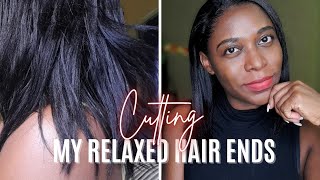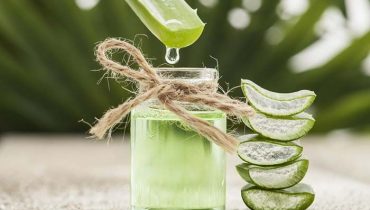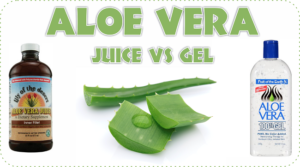Learn How to Use an Aloe Vera Gel Hair Mask to Promote Natural Hair Growth and Regrowth
- Posted on 21 October, 2017
- Hot Topic
- By Kenneth

Aloe vera, a wild tropical plant that grows on multiple continents, is coveted for a variety of medicinal and agricultural purposes, including hair growth, hair loss, hair shedding, and as a do-it-yourself scalp moisturizer.
Aloe vera’s common names are lily of the desert, the fruit of the earth, burn plant, elephant’s gall, and aloe.
The Health Benefits of Using Aloe Vera for Hair

History would suggest that aloe was originally used in early Egyptian society, where the plant was found portrayed on stone carvings and often presented to pharaohs as a funeral offering.
The aloe vera plant was referred to as the “plant of immortality” during this period.
Over the years, there are a variety of ways that aloe has been used. These use cases include treating hemorrhoids, hair loss, wounds, and constipation.
Many women use aloe vera gel for hair loss treatments, although clear aloe vera gel and yellow latex are commonly found in health and beauty products.
Aloe vera gel, which contains proteolytic enzymes, is found inside the aloe plant’s leaf. The gel is a clear, jelly-like consistency.
The yellowish aloe latex is found right under the plant’s skin. Products containing crushed aloe leaves include yellow latex and gel.
Aloe gel’s primary use is topical, meaning that it is applied to the skin to treat skin conditions such as cold sores, psoriasis, frostbite, and burns.
It is, however, also possible to take it orally, meaning by mouth, for conditions such as fever, bowel diseases, and osteoarthritis.
Aloe latex is usually taken orally to help treat constipation.
Where to Buy Aloe Vera Juice, Gel, and Latex: You’re likely to find aloe vera products, including juice, gel, and latex at local stores in your area. Curl Centric recommends Green Leaf Naturals Aloe Gel, which can be used on your skin, face, and hair. Containing 99.75% pure, organic, aloe gel that has been cold pressed, it can be purchased online using this link.DIY Aloe Vera Juice for Hair, Health, & Skin
DIY Aloe Vera Juice For Hair, Skin and HealthThe traditional, alternative approach that CurlyPenny mentions is to begin by breaking off an outer leaf of the plant. Note that the gel will ooze out after the leaf is cut, so use something to catch the gel, or you’ll potentially have a mess to clean-up.
Next, we recommend cutting the spikes off of the outer leaf that you just removed. This will help you avoid getting stuck by the leaf’s spikes.
Then slowly cut open the middle of the leaf and use a spoon to scoop out the gel. Afterward, you can follow the remaining steps in the video to create the aloe mixture.
Anecdotal Evidence vs. Scientific Evidence

There is anecdotal evidence that you can use aloe vera juice for hair growth, hair loss and shedding, dryness, itchy scalp, restoring pH balance, as a hair conditioner and to reducing dandruff.
However, there is not sufficient scientific evidence that supports whether aloe is, in fact, helpful for many of these common uses.
Aloe latex does have strong laxative compounds. At one time, products made with aloe vera were regulated by the Food and Drug Administration (FDA) as over the counter (OTC) medicines.
The FDA, in 2002, required that all aloe laxative products which were OTC be reformulated or removed from the market in the United States because the companies manufacturing them did not provide the necessary safety data for approval to be continued (source).
There has been some evidence proving that the topical use of certain products made with aloe may be helpful for symptoms of certain conditions such as certain rashes or psoriasis due to its antifungal and antiviral properties.
There is not, however, sufficient scientific evidence proving that the topical use of aloe will help to heal wounds.
Is It Safe to Use Aloe Vera?

In 2013, the National Toxicology Program, part of the National Institutes of Health, conducted a study on the oral consumption of whole leaf, non-decolorized, aloe vera extract.
The study’s findings indicated that there was clear evidence of carcinogenicity in both female and male rats; this was based on tumors found in the large intestine and likely caused by the aloin component within the plant’s leaf.
Another study conducted on mice found that there were no harmful effects caused by whole leaf, decolorized aloe vera.
What this suggests is that aloin, which is substantially removed by the process of decolorization, may have been responsible for the tumors found in the rats which were fed the whole leaf, non-decolorized aloe vera.
The topical use of aloe appears to be safe. To determine any potential risks for humans, more information is needed, including which products are currently in the marketplace as well as how people utilize aloe vera products.
For example, when oral aloe latex has been used, there have been reports of abdominal cramps as well as diarrhea.
Those with diabetes who are on medication to lower glucose must be careful if they are also taking aloe orally, this is because aloe vera can purportedly lower blood glucose levels.
There have been some anecdotally reported cases of people who took aloe vera orally suffering from acute hepatitis. The evidence, however, is not definitive.
We recommend consulting a health care professional before using oral aloe vera derivatives.




